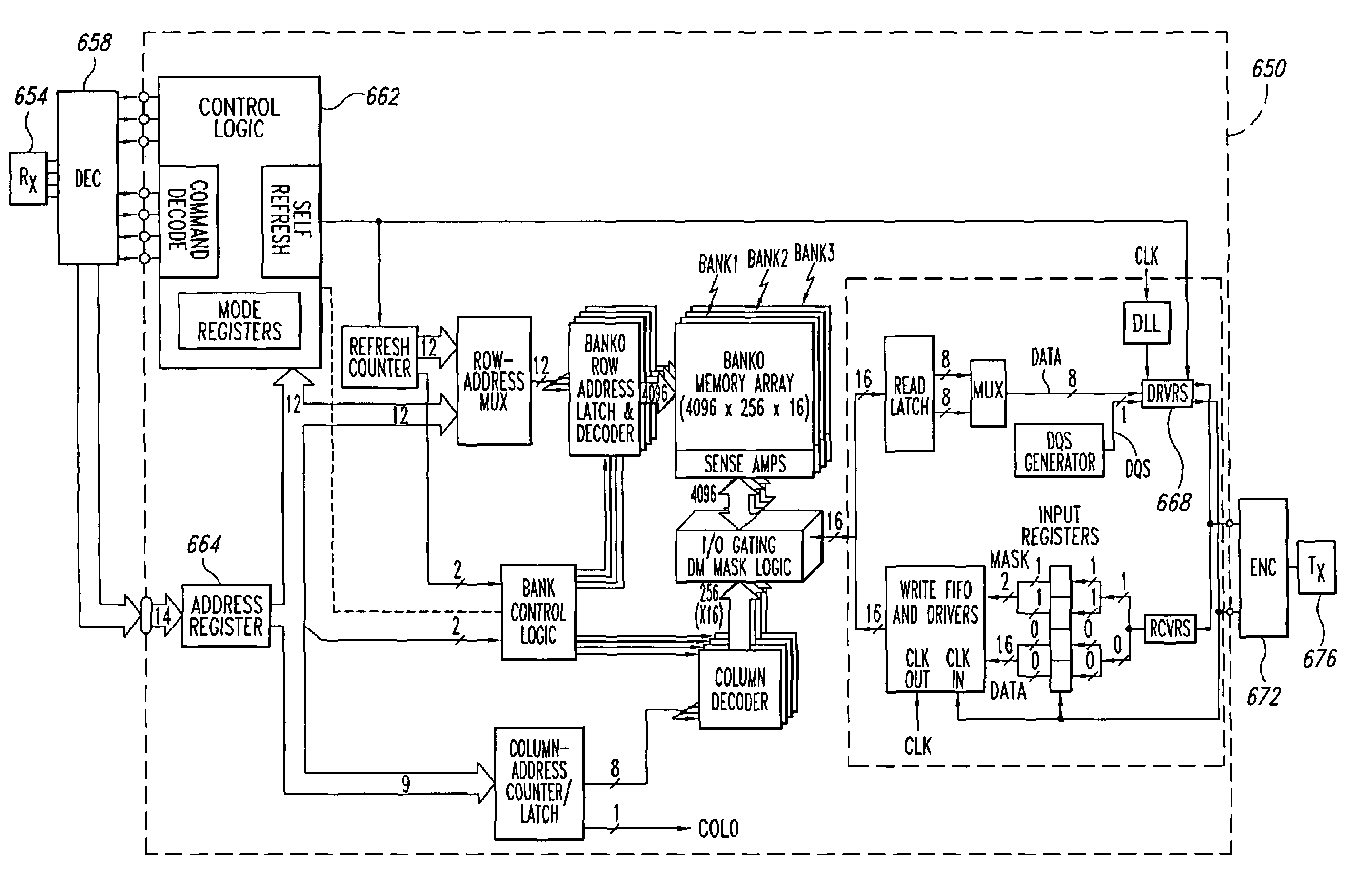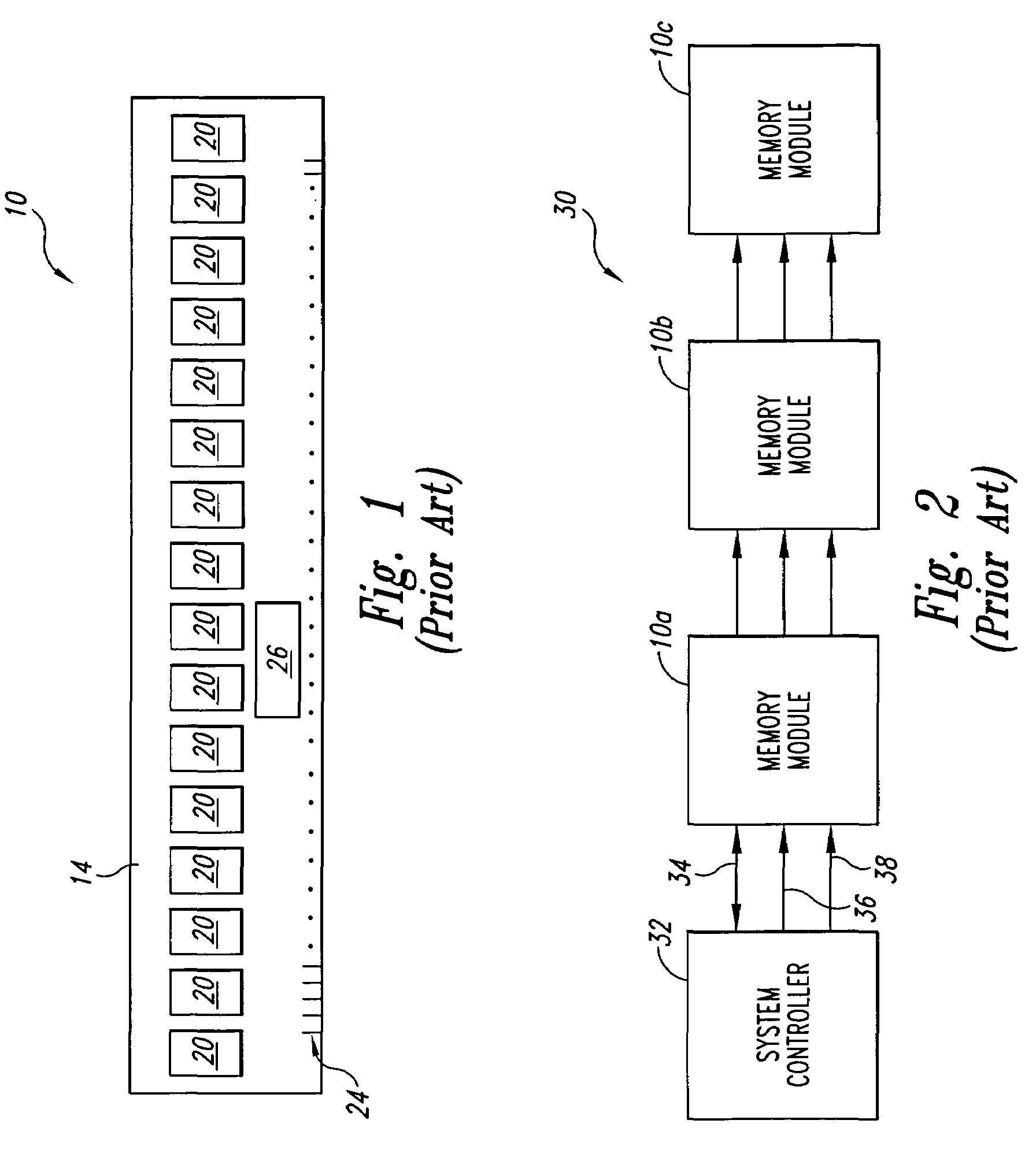System and method for multiple bit optical data transmission in memory systems
a memory system and optical data technology, applied in the field of memory systems, can solve the problems of inability to keep up with the increase in microprocessor speed, the response time of computer memory systems has not at all kept up with other aspects of computer design and manufacture, and the potential bandwidth is enormous, so as to increase the speed at which data is transmitted, increase the bandwidth of optical transmission media, and carry more data more quickly
- Summary
- Abstract
- Description
- Claims
- Application Information
AI Technical Summary
Benefits of technology
Problems solved by technology
Method used
Image
Examples
Embodiment Construction
[0025]Instead of communicating bits of data using conventional, conductive signal lines, embodiments of the present invention communicate bits of data using light. In particular, embodiments of the present invention use optical transmitters and receivers which are capable of generating and deciphering, respectively, compound light signals comprising signals having a plurality of wavelengths. The compound signals allow for each light signal to represent multiple bits of data, effectively increasing the bandwidth of the optical data transmission system.
[0026]FIG. 3 is a graph 300 of an example binary signal 304 generated by a monochromatic LED or other light source. In the example of FIG. 3, the signal 304 being sent represents the number “99.” A conventional LED would transmit this number in binary, base two form, which could be transmitted in a single, eight-bit data byte as “01100011.” The graph 300 shows this signal 304 sent over time. The unit of time 308 marked in FIG. 3 is the ...
PUM
 Login to View More
Login to View More Abstract
Description
Claims
Application Information
 Login to View More
Login to View More - R&D
- Intellectual Property
- Life Sciences
- Materials
- Tech Scout
- Unparalleled Data Quality
- Higher Quality Content
- 60% Fewer Hallucinations
Browse by: Latest US Patents, China's latest patents, Technical Efficacy Thesaurus, Application Domain, Technology Topic, Popular Technical Reports.
© 2025 PatSnap. All rights reserved.Legal|Privacy policy|Modern Slavery Act Transparency Statement|Sitemap|About US| Contact US: help@patsnap.com



